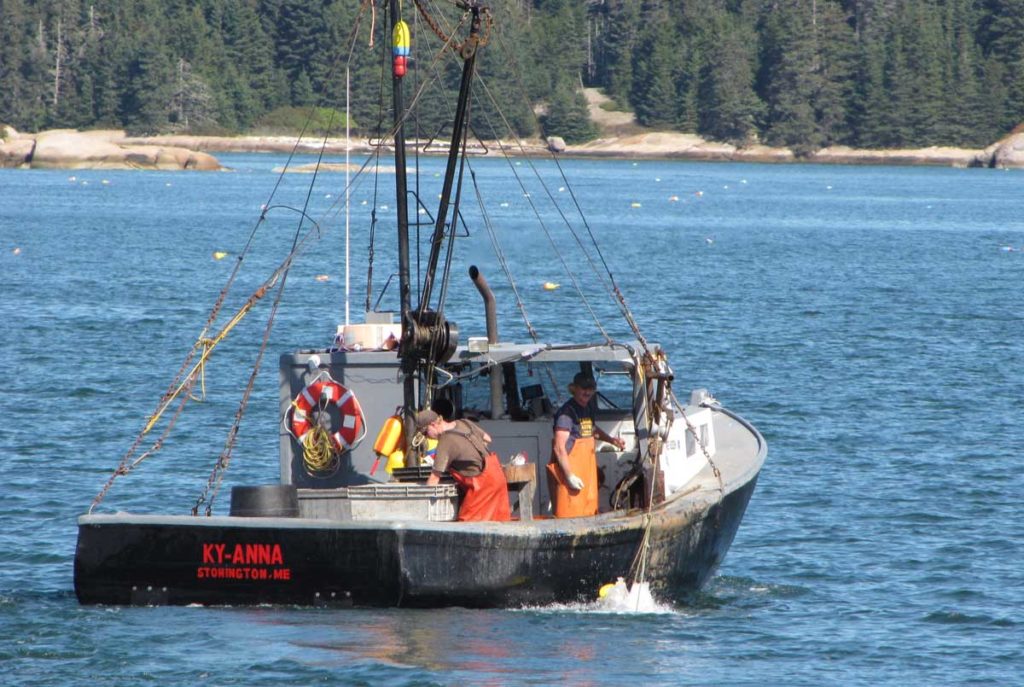ROCKPORT — A firm hired by the Maine Lobster Marketing Collaborative to help grow markets for and increase the value of the state’s signature seafood unveiled its strategy at the Maine Fishermen’s Forum on Friday, March 6. Representatives from the firm Weber Shandwick said their vision aims to:
- Establish the June-November period as “lobster season.”
- Rebrand what have known as shedders and soft-shell lobsters as “new shell” lobsters.
- Persuade influential chefs and consumers to understand that newly shed lobsters have sweeter, more-tender meat that tastes more “lobstery.”
- Focus a press campaign on the Northeast, from Pennsylvania to New England, where 64 percent of Maine lobster is consumed.
“Seasonal food is exciting food,” said Joe Frydl of Weber Shandwick. “It matters more and more to diners to eat things in season,” he said, noting the enthusiasm that greets the first fiddleheads of spring, the first peas of summer and, in Alaska, the return of river-run salmon.
Stressing the “lobster season”—June to November—also coincides with the peak supply, so if consumption grows, price will stay higher than it historically has during the summer, he said.
Pork, chicken and beef are not identified with a particular place, Frydl continued, while lobster could and should be associated with Maine. The goal is to market Maine lobster as a “protein with provenance,” he said, linking it to the people who catch it, the way they catch it, and their lifestyle.
That Maine lobster is caught by hand, “one trap at a time,” will be part of the marketing scheme. So will with stressing to consumers that Maine lobster doesn’t come from “a factory at sea,” such as salmon ships off Alaska, and that the fishery is certified as sustainable.
But seasonality, origins and stories aside, Frydl said, there must be a real benefit to those eating Maine lobster. Like Copper River salmon in Alaska, a fish that is high in fat as it prepares to swim upriver to spawn and therefore is favored by chefs and foodies, “new shell” lobster will be touted as “a seasonal delicacy.”
Not enough chefs and diners know that there’s a better “level” of lobster, he said.
A food blog, Serious Eats, conducted a side-by-side taste test of new shell and hard shell lobster, and tasters preferred the new shell. The marketing effort will work to persuade 100 or so influential chefs of the tasty, tender qualities of new shell lobster, Frydl said, thereby fueling “menu innovation.”
Currently, Maine lobster is featured on just 4 percent of some 2,200 upscale casual dining menus, said Matt Jacobson, executive director the lobster marketing collaborative, suggesting much growth in demand is possible.
Weber Shandwick also plans to push stories about Maine lobster to media that focus on food.
“People trust what a notable food editor tells them,” said Weber Shandwick’s Michael Wehman.
In response to a question, the group said that while lobstermen think of hard shell lobster as higher quality because it ships better, they need to change their view of their product.
The lobster marketing collaborative had $750,000 to spend in 2014, and will have $1.5 million this year and $2.6 million 2016 and beyond, Jacobson. The effort is funded through fees on fishermen and processors.





